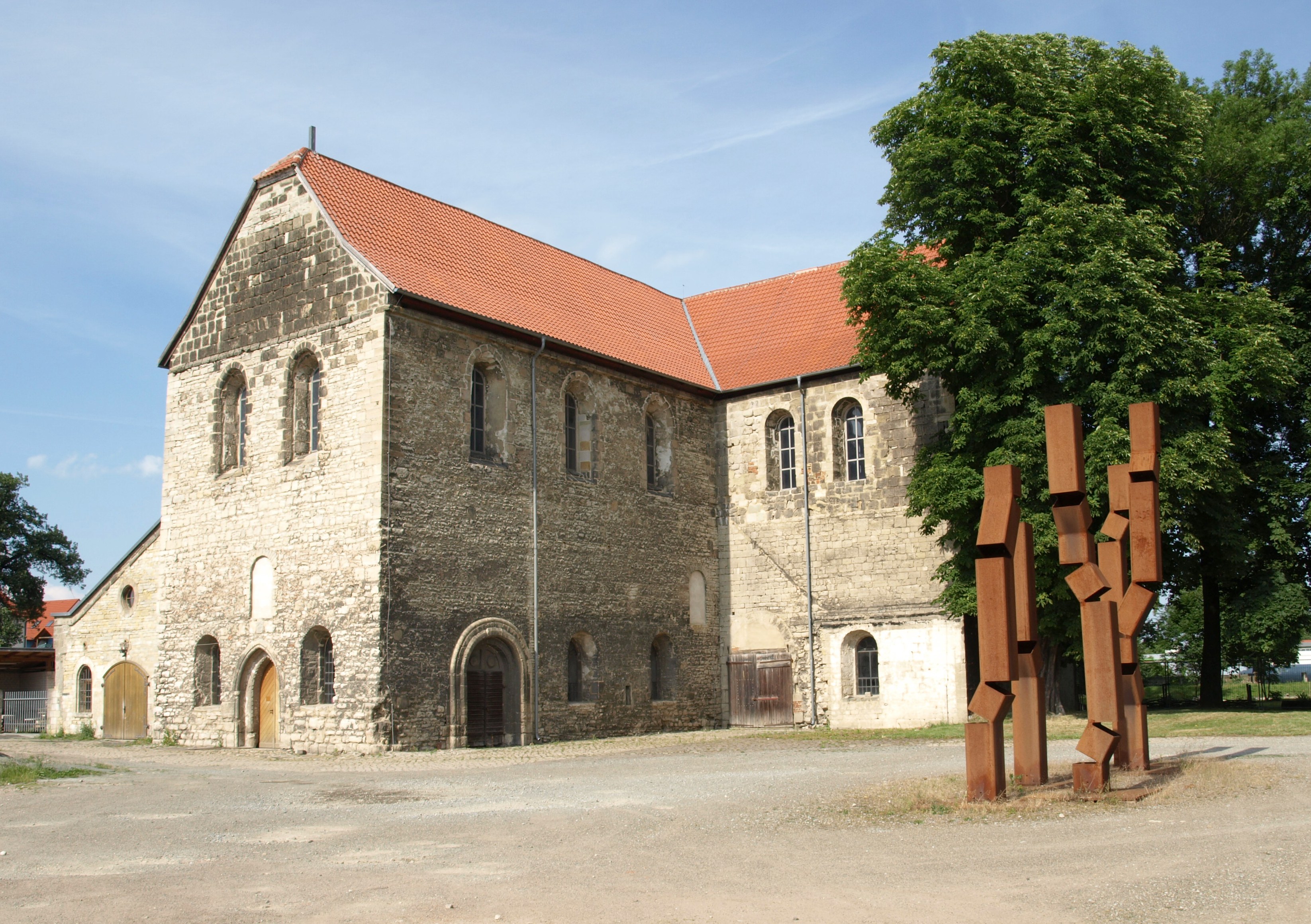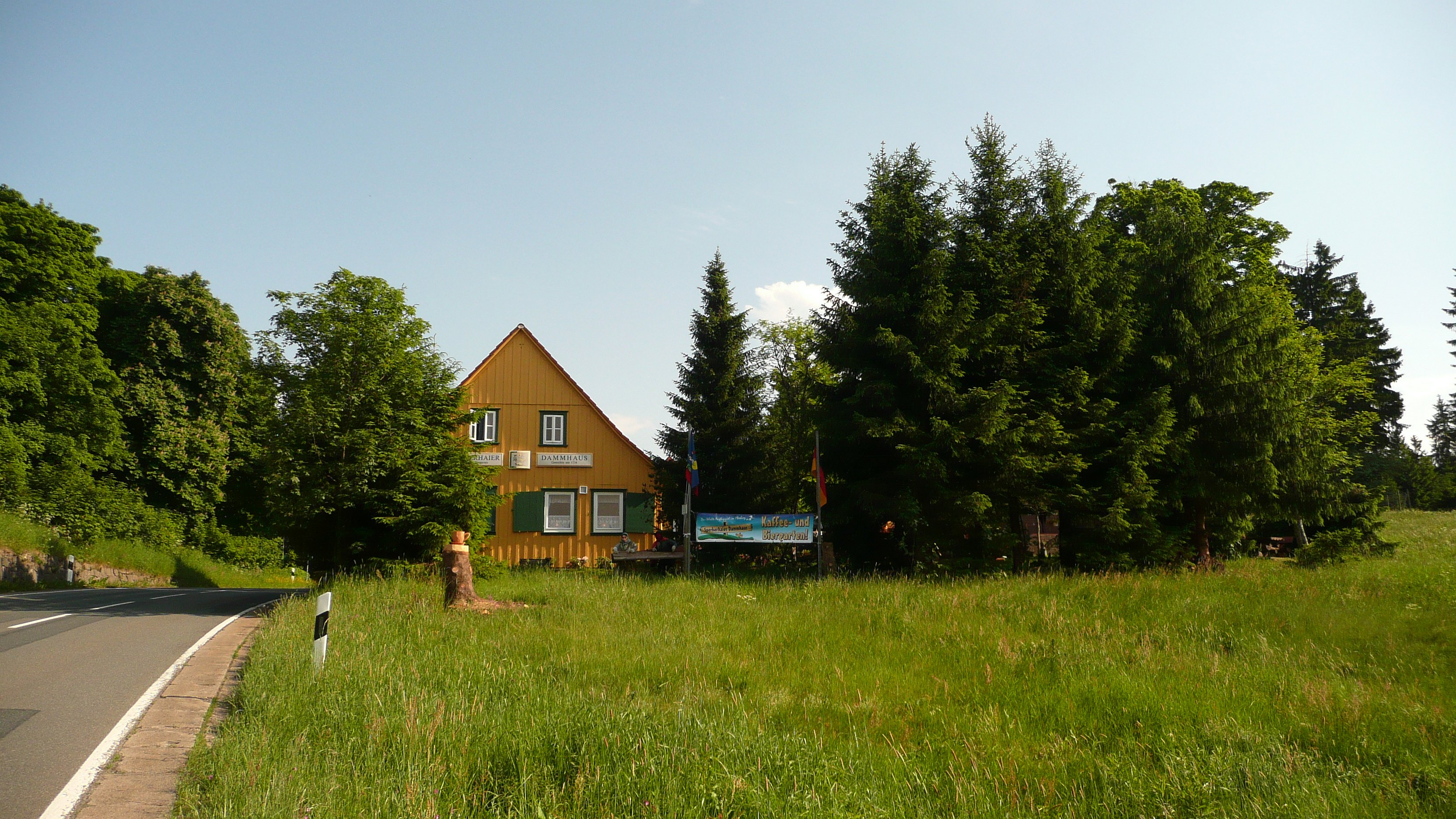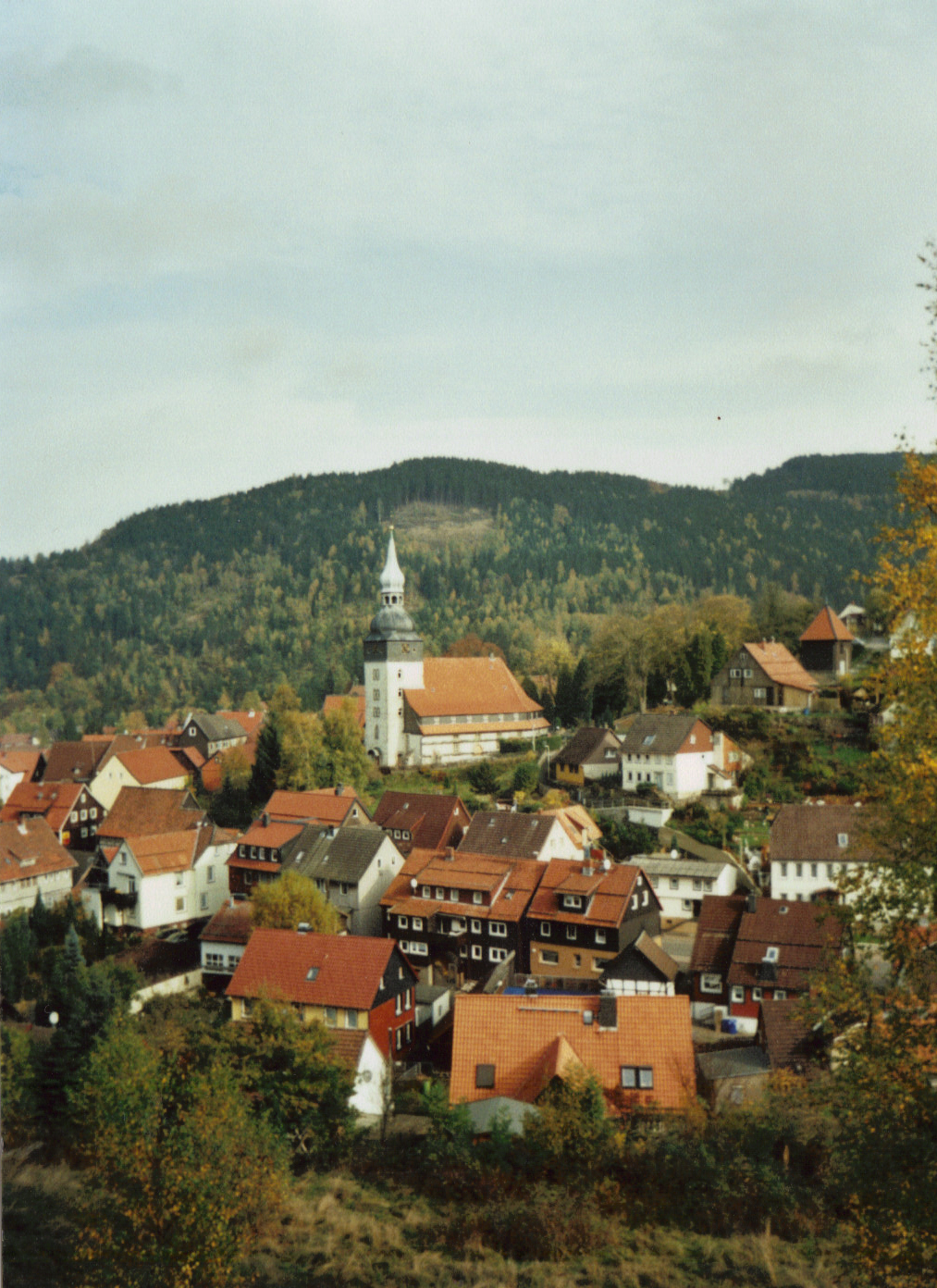|
Neuekrug-Hahausen–Goslar Railway
The Neuekrug-Hahausen–Goslar railway is a double-tracked, non-electrified main line in Lower Saxony in central Germany. The line, which runs along the northern edge of the Harz mountains, begins in Goslar and forms a junction with the Brunswick–Kreiensen railway to Seesen and Kreiensen at Neuekrug-Hahausen. Because the branch-off station is passed through nowadays without stopping, it is often called the ''Goslar–Seesen railway''. It is often described in the local area as the North Harz Line (''Nordharzstrecke'') but the term may cause confusion. The most important, and now the only, intermediate station is Langelsheim. History The Vienenburg–Langelsheim railway via Grauhof from the Magdeburg-Halberstadt Railway was opened in 1875 and was extended (as the Innerste Valley Railway) to Lautenthal, later via Clausthal to Altenau. Here a branch line of the Brunswick Railway Company to Neuekrug-Hahausen was opened on 15 September 1877, which saved east-west goods ... [...More Info...] [...Related Items...] OR: [Wikipedia] [Google] [Baidu] |
Lower Saxony
Lower Saxony is a States of Germany, German state (') in Northern Germany, northwestern Germany. It is the second-largest state by land area, with , and fourth-largest in population (8 million in 2021) among the 16 ' of the Germany, Federal Republic of Germany. In rural areas, Northern Low Saxon and Saterland Frisian language, Saterland Frisian are still spoken, though by declining numbers of people. Lower Saxony borders on (from north and clockwise) the North Sea, the states of Schleswig-Holstein, Hamburg, , Brandenburg, Saxony-Anhalt, Thuringia, Hesse and North Rhine-Westphalia, and the Netherlands. Furthermore, the Bremen (state), state of Bremen forms two enclaves within Lower Saxony, one being the city of Bremen, the other its seaport, Bremerhaven (which is a semi-exclave, as it has a coastline). Lower Saxony thus borders more neighbours than any other single '. The state's largest cities are the state capital Hanover, Braunschweig (Brunswick), Oldenburg (city), Oldenburg, ... [...More Info...] [...Related Items...] OR: [Wikipedia] [Google] [Baidu] |
Seesen
Seesen () is a town and municipality in the district of Goslar, in Lower Saxony, Germany. It is situated on the northwestern edge of the Harz mountain range, approx. west of Goslar. History The Saxon settlement of ''Sehusa'' was first mentioned in a 974 AD deed issued by Emperor Otto II and Chancellor Willigis, from 1235 on it belonged to the Welf dukes of Brunswick-Lüneburg who had a castle erected. In 1428 Seesen received town privileges by Duke Otto II the One-Eyed of Brunswick-Göttingen. On 17 July 1810 in Seesen, Israel Jacobson dedicated the first synagogue to use some German in its liturgy, and to employ an organ and a choir during prayer; that dedication date is celebrated in Reform Judaism worldwide as the founding of the denomination. In 1836 Heinrich Engelhard Steinweg (later named Henry E. Steinway) built his first grand piano in his kitchen in Seesen; the instrument is today on display at New York's Metropolitan Museum of Art. Politics Seats in the m ... [...More Info...] [...Related Items...] OR: [Wikipedia] [Google] [Baidu] |
Buildings And Structures In Goslar (district)
A building or edifice is an enclosed structure with a roof, walls and windows, usually standing permanently in one place, such as a house or factory. Buildings come in a variety of sizes, shapes, and functions, and have been adapted throughout history for numerous factors, from building materials available, to weather conditions, land prices, ground conditions, specific uses, prestige, and aesthetic reasons. To better understand the concept, see ''Nonbuilding structure'' for contrast. Buildings serve several societal needs – occupancy, primarily as shelter from weather, security, living space, privacy, to store belongings, and to comfortably live and work. A building as a shelter represents a physical separation of the human habitat (a place of comfort and safety) from the ''outside'' (a place that may be harsh and harmful at times). buildings have been objects or canvasses of much artistic expression. In recent years, interest in sustainable planning and building practi ... [...More Info...] [...Related Items...] OR: [Wikipedia] [Google] [Baidu] |
Transport In The Harz
Transport (in British English) or transportation (in American English) is the intentional movement of humans, animals, and goods from one location to another. Modes of transport include air, land (rail and road), water, cable, pipelines, and space. The field can be divided into infrastructure, vehicles, and operations. Transport enables human trade, which is essential for the development of civilizations. Transport infrastructure consists of both fixed installations, including roads, railways, airways, waterways, canals, and pipelines, and terminals such as airports, railway stations, bus stations, warehouses, trucking terminals, refueling depots (including fuel docks and fuel stations), and seaports. Terminals may be used both for the interchange of passengers and cargo and for maintenance. Means of transport are any of the different kinds of transport facilities used to carry people or cargo. They may include vehicles, riding animals, and pack animals. Vehicles may includ ... [...More Info...] [...Related Items...] OR: [Wikipedia] [Google] [Baidu] |
Railway Lines In Lower Saxony
Rail transport (also known as train transport) is a means of transport using wheeled vehicles running in tracks, which usually consist of two parallel steel rails. Rail transport is one of the two primary means of land transport, next to road transport. It is used for about 8% of passenger and freight transport globally, thanks to its energy efficiency and potentially high speed.Rolling stock on rails generally encounters lower frictional resistance than rubber-tyred road vehicles, allowing rail cars to be coupled into longer trains. Power is usually provided by diesel or electric locomotives. While railway transport is capital-intensive and less flexible than road transport, it can carry heavy loads of passengers and cargo with greater energy efficiency and safety. Precursors of railways driven by human or animal power have existed since antiquity, but modern rail transport began with the invention of the steam locomotive in the United Kingdom at the beginning of the 19th c ... [...More Info...] [...Related Items...] OR: [Wikipedia] [Google] [Baidu] |
Division Of Germany
Division may refer to: Mathematics *Division (mathematics), the inverse of multiplication *Division algorithm, a method for computing the result of mathematical division Military *Division (military), a formation typically consisting of 10,000 to 25,000 troops ** Divizion, a subunit in some militaries *Division (naval), a collection of warships Science *Cell division, the process in which biological cells multiply *Continental divide, the geographical term for separation between watersheds *Division (taxonomy), used differently in botany and zoology *Division (botany), a taxonomic rank for plants or fungi, equivalent to phylum in zoology *Division (horticulture), a method of vegetative plant propagation, or the plants created by using this method * Division, a medical/surgical operation involving cutting and separation, see ICD-10 Procedure Coding System Technology *Beam compass, a compass with a beam and sliding sockets for drawing and dividing circles larger than those made by ... [...More Info...] [...Related Items...] OR: [Wikipedia] [Google] [Baidu] |
Salzgitter-Ringelheim Station
Salzgitter-Ringelsheim station is a station in the town of Salzgitter in the German state of Lower Saxony. It is located in the extreme southwest of the urban area in the district of Salzgitter-Ringelheim. Salzgitter has no central station and Salzgitter-Ringelsheim station, despite its remote location, is the main station in Salzgitter. Infrastructure The station is a railway junction, built as the through station lying east-west. The Brunswick–Kreiensen railway and the Hildesheim–Goslar railway, which intersect here, are not electrified. It is served by Regionalbahn and Regional-Express trains. It is classified by Deutsche Bahn as a category 5 station. Rail services History The Brunswick Southern Railway (Brunswick–Kreiensen railway) was built from Brunswick towards Kreiensen through the south of modern urban area of Salzgitter in 1856, passing through Salzgitter station—now called Salzgitter Bad station—and Ringelheim (Harz). The rail network in the Salzg ... [...More Info...] [...Related Items...] OR: [Wikipedia] [Google] [Baidu] |
Halberstadt
Halberstadt (; Eastphalian dialect, Eastphalian: ''Halverstidde'') is a town in the state of Saxony-Anhalt in central Germany, the capital of Harz (district), Harz district. Located north of the Harz mountain range, it is known for its old town center, which was largely destroyed by Allied bombings in the late stages of World War II after local Nazi leaders refused to surrender. The town was rebuilt in the following decades. In World War I Halberstadt was the site of a German military airbase and aircraft-manufacturing facilities. In World War II Halberstadt was a regional production center for Junkers aircraft, which also housed an Schutzstaffel, SS Forced labour under German rule during World War II, forced labor camp. Halberstadt now includes the area where the Langenstein-Zwieberge concentration camp was situated. Today the city has around 450 timber framed houses in its city centre and timber framed old villages like Langenstein, Saxony-Anhalt, Langenstein. Geography Ha ... [...More Info...] [...Related Items...] OR: [Wikipedia] [Google] [Baidu] |
Altenau
Altenau () is a town and a former municipality in the district of Goslar, in Lower Saxony, Germany. Since 1 January 2015 it is part of the town Clausthal-Zellerfeld. It is situated in the middle of the Harz mountains, between Clausthal-Zellerfeld and the Brocken. It was part of the former ''Samtgemeinde A (, ; plural: ''Samtgemeinden'') is a type of administrative division in Lower Saxony, Germany. ''Samtgemeinden'' are local government associations of Municipalities of Germany, municipalities, equivalent to the ''Amt (administrative division) ...'' ("collective municipality") Oberharz. Geography The place is centrally located in the Upper Harz. Clausthal-Zellerfeld in the west is about ten kilometers, Goslar in the north about 15 km and Osterode am Harz in the southwest about 25 km away. To the east of the mountain town, twelve kilometers away, is the summit of the Brocken, which can be seen from many places in Altenau. The Oker flows through Altenau from sou ... [...More Info...] [...Related Items...] OR: [Wikipedia] [Google] [Baidu] |
Clausthal
Clausthal-Zellerfeld () is a town in Lower Saxony, Germany. It is located in the southwestern part of the Harz mountains. Its population is approximately 15,000. The town hosts the Clausthal University of Technology. The health resort is located in the Upper Harz at an altitude between 390 and 821 m above sea level. Geography Clausthal-Zellerfeld is located on the Upper Harz Plateau. The surrounding area is less mountainous compared to most of the Harz. As a result, the adjacent area is less wooded and there is more pasture land. Scattered in and around Clausthal-Zellerfeld are numerous dams and streams belonging to the Upper Harz Water Regale. The depression between Clausthal and Zellerfeld marks a natural "borderline". Southwest extends the "Small Clausthal valley". City districts * Altenau- Schulenberg im Oberharz (since 2015) * Buntenbock (since 1972) * Clausthal-Zellerfeld * Wildemann (since 2015) History Clausthal-Zellerfeld originally consisted of two towns ... [...More Info...] [...Related Items...] OR: [Wikipedia] [Google] [Baidu] |
Lautenthal
The formerly free mining town ('' Bergstadt'') of Lautenthal in Germany is a state-recognised, climatic spa with around 1,570 inhabitants and has been part of the borough of Langelsheim since 1972. Geography Lautenthal lies in the Innerste valley between Clausthal-Zellerfeld and Langelsheim in the northwestern Upper Harz. The town is located at a height of about in a valley bowl, the surrounding mountains being up to . The two rivers of the Innerste and the Laute flow through the town. Towards Langelsheim the Innerste is impounded by the Innerste Dam. History Mining of copper, lead and silver in the area around Lautenthal started about 1225. In the middle of the 14th century, however, the Harz was depopulated because of plague and mining came to an end. Mining in the Harz was started again in 1524. Lautenthal was founded in 1538 as a mining settlement on the river Laute, a small tributary of the Innerste, and had already been given the status of a town by 1580. Sixtee ... [...More Info...] [...Related Items...] OR: [Wikipedia] [Google] [Baidu] |
Innerste Valley Railway
The Innerste () is a river in Lower Saxony, Germany. It is a right tributary of the Leine river and in length. Origin of the name The river name is not related to the German word ''innerste'' meaning innermost. ''Innerste'', in earlier times called the ''Inste'' (1805), ''Inderste'' (1567), ''Indistria'' (1313), ''Entrista'' (1065) and ''Indrista'' (1013), probably goes back to the Indo-Germanic root ''oid'' = ''turbulent, strong''. It may be the name referred to in the name of the battlefield of '' ''Idista''viso'' (16 A.D.). Course The river's source is in the Harz mountains, from the town of Clausthal-Zellerfeld to the southwest at an elevation of 615 m and is called ''Innerstesprung''. As a small brook, the Innerste flows west and passes a system of lakes, the first of which is called ''Entensumpf''. The next lakes are ''Oberer Nassenwieser Teich'', ''Bärenbrucher Teich'', ''Ziegenberger Teich'', and ''Sumpfteich''. The German word ''Teich'' means "pond". Havi ... [...More Info...] [...Related Items...] OR: [Wikipedia] [Google] [Baidu] |






